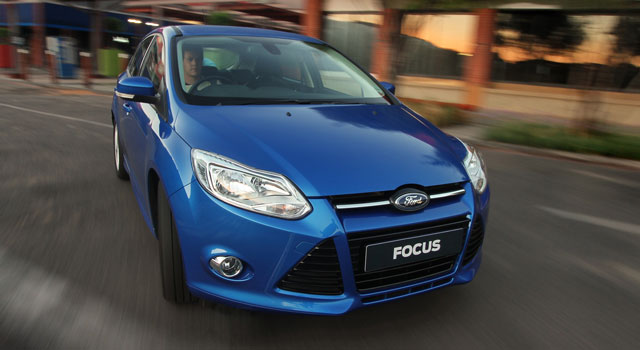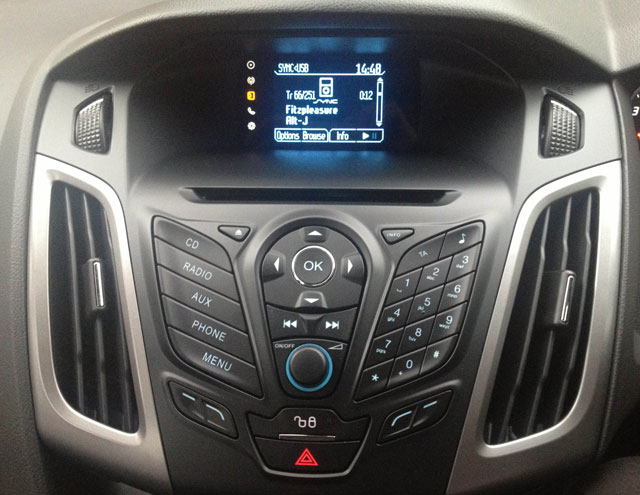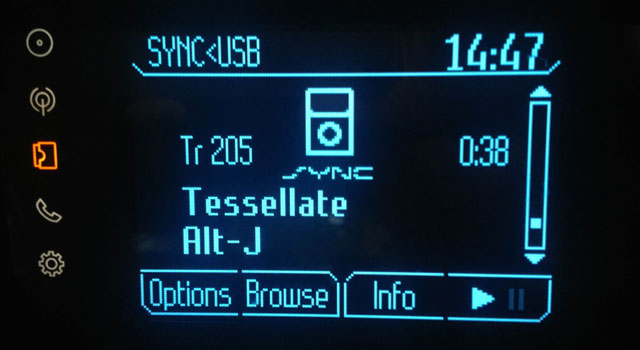
US automotive giant Ford is introducing its Sync technology, offering an advanced voice-recognition system, into the South African market. From next year, Sync, built by Microsoft, will be available in all new Fords sold in the country, with the exception of the entry-level Figo range.
Sync is Ford’s information and entertainment system that allows drivers to control the car’s audio system and their mobile phone. The system is meant to allow for natural speech and respond to a wide range of commands and phrases.
In addition to voice commands, drivers can operate the audio system or their phone using the controls on the steering wheel. There are two sets of four-way controllers, with a central confirmation button, one on each side of the steering wheel, designed to be operated with the driver’s thumbs. The right-hand controller is for the dash-display, while the left-hand controller is used for audio and telephony.
In order to use a mobile phone with Sync, users need to pair their handset using Bluetooth. They are asked whether to treat the newly paired phone as their primary device — meaning the first one the system will look for when the car is started each time — and whether to import their contacts list to the car.
For security reasons, the contacts list is only visible when the handset is connected to the system. Data from up to six handsets can be stored and it’s easy to delete a device via the system menu. Even better, it will check for amendments or additions to your contacts each time a handset connects to it should you want it to.
Once a handset is connected, pulling the voice control paddle on the left-hand side of the steering wheel activates Sync’s voice command system and the driver is prompted to speak an instruction. These can include requests to call a contact (“Phone Suzie on her mobile”), stream audio over Bluetooth (“Bluetooth streaming, play”), switch to the radio (“Radio”) or CD player (“CD player”).
Unfortunately, when streaming audio over Bluetooth, control is extremely limited. If the phone or a supported MP3 player, like an iPod, is connected via USB, voice instructions such as “USB, play song, Enter Sandman” or “USB, play band, Metallica” also work. The USB and aux-in ports are both located in the glove compartment.


Sync tells you who’s calling when you get an incoming call and allows you to receive or place calls without laying a finger on your phone.
It’s still a little clunky in that you do need to know at least a handful of commands to get it to behave and it sometimes has trouble with similar-sounding words. In our tests, requesting the band Alt-J, for example, resulted in the band Jet playing. But on the whole Sync is responsive and intuitive.
One of the novel features of the Sync system is the ability to ask it to “play similar” music. It’s most effective with a sizeable collection of music to hand but, even with only a couple of hundred songs on the iPhone that we used to test the system, it made a decent playlist of a dozen tracks — more than enough to tide us over for the drive home from the office.
Sync is also able to read out new incoming messages, and although this is still as robotic-sounding an affair as most text recognition systems, it’s useful. There’s also the option to respond to text with one of 15 predefined messages, including practical messages like “call me” and “can’t talk now”, soppy ones like “miss you” and “I love you” and curious inclusions like “heavy traffic :-(“ and “too funny :-)”.
In South Africa, the system is supplied with the British English settings. To create Sync, Ford and Microsoft partnered with Nuance Communications, the maker of the Dragon Dictate software. “Serena” is the only voice available for Sync, but it’s neutral enough.
We’d like to see a less rigid command structure in future versions, and in the US Sync is included in the built-in navigation that accompanies high-end Fords, another feature that will hopefully make its way to South Africa soon.
Nevertheless, the ability to control audio and a mobile phone with relative ease — after a bit of practice the steering-wheel buttons can be used without taking your eyes off the road — is a step in the right direction, particularly in a country with as high a road death toll as South Africa. — (c) 2012 NewsCentral Media




